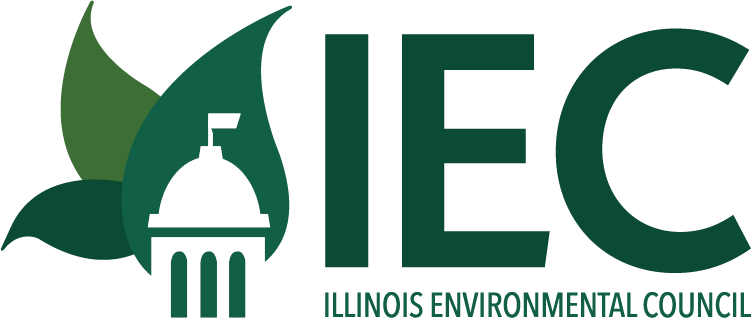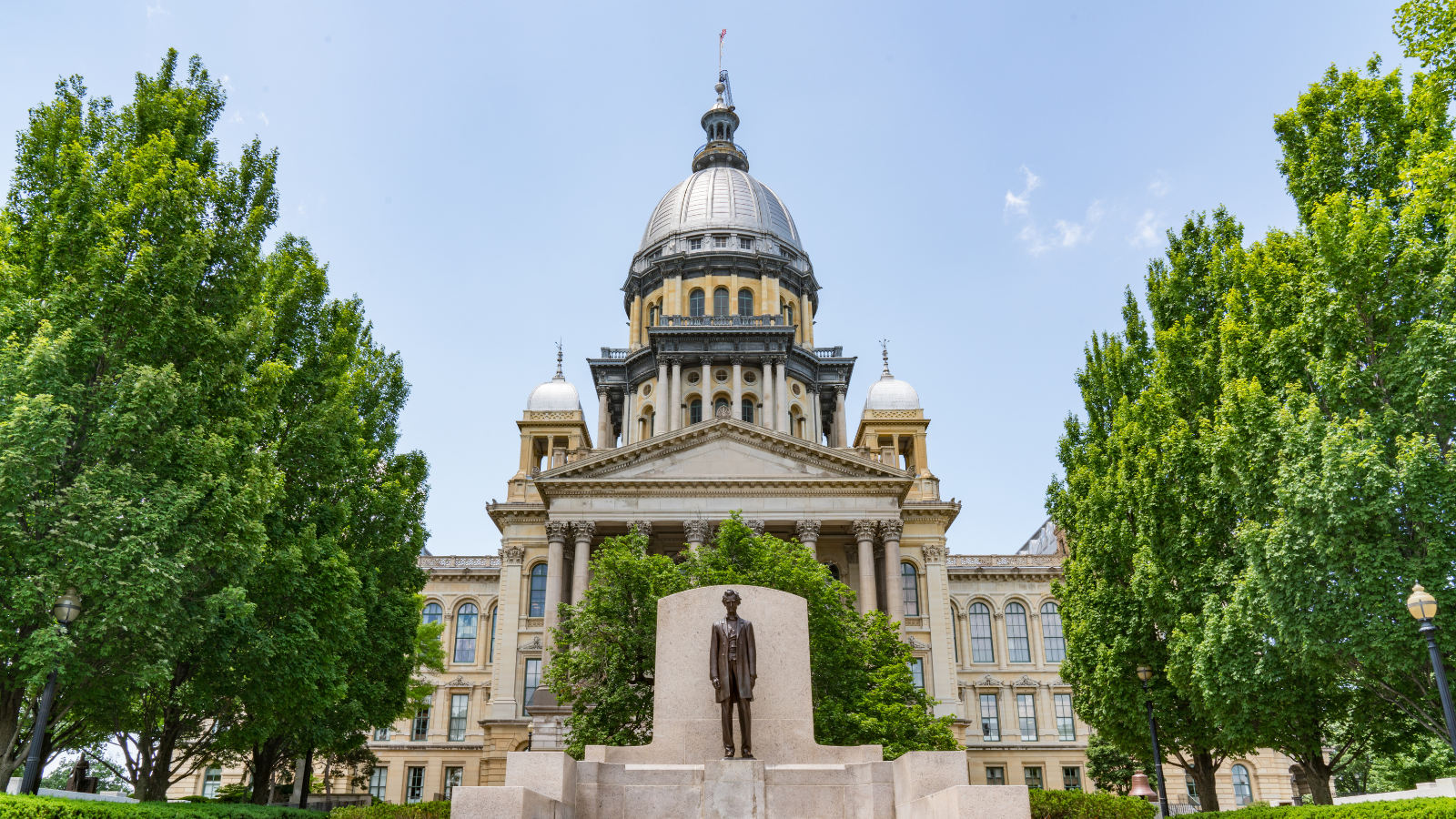In his seventh State of the State and Budget address, Gov. JB Pritzker unveiled his administration’s proposed budget for Fiscal Year 2026 (FY26) of $55.4 billion. While the General Assembly won’t negotiate and approve the final budget until late May, this Governor’s proposed budget signals the administration’s priorities. A state budget is an expression of our leaders’ values. Decision-makers fund what they deem most important among an array of ever-competing priorities, and this year, we’ll be vying for environmental funding in an evolving fiscal landscape.
Early fiscal projections indicated that the state would face a $3.2 billion budget deficit in 2026 as sales tax revenue lagged, federal COVID funding waned, and inflation persisted. Fortunately, those projections have improved in recent weeks, lessening the gap and infusing some optimism across state government and advocacy organizations alike. Still, we applaud Gov. Pritzker’s commitment to introducing and adopting balanced budgets after years of fiscal mismanagement during the Rauner administration. With much-needed fiscal responsibility comes difficult funding decisions.
In FY26, we’ll also grapple with the fiscal instability and uncertainty introduced by the chaotic Trump administration. In their first month, Trump and Elon Musk have unleashed politically motivated, inexperienced operatives tasked with blunt funding cuts to critical government services, functions, and departments. The underlying motive? Sowing chaos while gutting core programs and services all Americans rely on to pay for tax cuts Trump promised to millionaires and billionaires.
The chaos at the federal level will negatively impact our state budget and every single Illinoisan. The Trump administration is already purging federal workers en masse, including illegally firing AFGE Local 704 union members at the US Environmental Protection Agency (USEPA), who work daily to ensure our air and water are clean and safe, 100 workers fired from Natural Resource Conservation Service in Illinois who protect our soil and water, and one-third of the employees at Midewin National Tallgrass Prairie. These cuts mean that Illinois state agencies will need to pick up neglected federal duties without certainty of being reimbursed for previous federal expenses or future federal funding.
In addition to these stresses, Illinois faces several fiscal cliffs due partly to reduced federal funding. Chief among them is the transit fiscal cliff to the tune of $1.5 billion in annual operating expenses. Our team at the Illinois Environmental Council will be working to address this looming crisis during this legislative session and advocating for the full funding of state agencies and programs that play a role in environmental protection in Illinois.
Through his budget, Gov. Pritzker has shown his continued climate leadership.
- While there are concerns about federal funding and its final availability to Illinois, Gov. Pritzker and his agency staff have worked diligently to bring money to the state for electric vehicles, renewable energy, and equitable workforce development. In the budget documents, Gov. Pritzker commits “to making Illinois the best state in the nation in which to drive and manufacture electric vehicles (EVs), with the goal of placing one million EVs on the road in Illinois by 2030.”
- Gov. Pritzker is laying the groundwork for improved funding for lead service line removal and clean water projects, particularly protection from PFAS pollution, through federal and state investments in community water systems.
We’d like to see Gov. Pritzker elevate nature-based climate solutions and increase prioritization for rural pollution issues.
- While the cover crop insurance discount program and the Soil and Water Conservation District funding is level this year, these programs are drastically underfunded. We expect reports to indicate stark increases to the agricultural pollution that needs to be cut to protect human health and wildlife as well as reduce our contribution to the hypoxic zone in the Gulf.
- Our Illinois Department of Natural Resources is also at level funding, but with an increase in staffing. Staffing levels are still half of what they were 20 years ago, and we are neither funding conservation stewardship sufficiently nor are we acquiring undeveloped natural lands, whose biodiversity could be lost forever.
The budget introduced is just the first step in this process. As the legislative session progresses, IEC and our affiliates will continue to advocate for our environmental priorities and monitor the budgetary progress over the next few months, addressing budget shortfalls.
Below is our complete initial analysis of Governor Pritzker’s proposed FY26 state budget.
Sustainable Agriculture and Conservation
- Decreases IDNR funding by $50 million, but increases headcount by 50 people.
- Adds $250,000 for Soil Health Assessment as passed by SB1701 in 2023
- Natural Areas Acquisition Fund remains at $13 million
- The Fall Covers for Spring Savings program, which provides cover crop insurance discounts to farmers, is appropriated at $660,000, level with FY24
- Soil and Water Conservation Districts remain level to FY2025 ($4.5 million), which is $5.5 million lower than what is needed
- $750,000 reappropriated for the Conservation Reserve Enhancement Program
- A total of $35 million in new funding proposed for the OSLAD program for fiscal year 2026
- $1 million for the Lake County greenway project
- Nearly $9 million to Illinois Environmental Protection Agency (IEPA) for nonpoint water pollution projects
- $2.5 million for a Youth and Young Conservation Education program for underserved and underrepresented youth
Clean Energy
- $56 million allocated to the Renewable Energy Resources Fund
- $28 million is appropriated from the Coal to Solar and Energy Storage Initiative Fund
- $28 million is appropriated from the Coal to Solar and Energy Storage Grant Program and Administrative Expenses
- $193 million in reappropriation authority for the Abandoned Mine Lands Program
- $50 million for coal ash remediation and closure program
- $3 million from the federal Inflation Reduction Act (IRA) for Climate Pollution Reduction Grant planning, including zero waste initiatives
- $2 million for the Climate Jobs Institute in higher education
- $9 million to the IEPA for the Energy Efficiency Grants under the Renewable Energy, Energy Efficiency, and Coal Resources Development Law of 1997, and $2 million for Renewable Energy Grants
- $350 million for the Energy Transition Assistance Fund
- $100 million for grants in accordance with the Safety and Aid for the Environment in Carbon Capture and Sequestration Act (SAFE CCS Act)
Green Workforce
- $3 million in Climate Pollution Reduction grant planning
- $1 million allocated to CEJA Workforce Training Programs
- $1.1 million allocated to Displaced Energy Worker Dependent Transition Scholarship Program
Equitable Transportation
- A total of $488 million to support operations of downstate public transit agencies, a $6 million increase from FY25.
- Increasing budget to $140 million for statewide projects that include biking and walking paths, trails, streetscape beautification, and other improvements through the Illinois Transportation Enhancement Program
- Maintains Vehicle Inspection Fund to $32 million to support costs of new vehicle inspections
- Support operations of NE IL transit system $734 million, $60 million increase from FY25
- $3.9 billion moved appropriated from Rebuild Illinois in the past 3 years for mass transit state of good repair funding for downstate transit and the Regional Transportation Authority (RTA)
- $682 million sales tax allocation to the Road Fund and deposits of $3 million into the Local Government Distributive Fund, the Downstate Public Transportation Fund, and the Public Transportation Fund
- Cycle Rider Safety Training Program is funded for FY26 at $25 million, about a $2 million increase over FY25 (though estimated to only spend $4 million in FY25)
- $79 million to support passenger rail, $9 million increase from FY25
Electric Vehicles (EVs)
- $14 million for EV rebates outlined in CEJA
- $24.8 million for the purchase of electric vehicles and charging infrastructure by Central Management Services
- $200,000 t salary funding for an electric vehicle coordinator
- $10 million for CEJA admin costs, including state fleet electrification
- $9 million in EV and advanced manufacturing curriculum at community colleges
- $7.5 million in EV-focused vocational training through the Clean Energy and Technical Education pilot program, a $2.5 million reduction from last year
Clean Water and Waste
- No money for the Brandon Road Ecosystem Project is included in the Capitol or Operating budget
- $90 million in IIJA funds to combat emerging contaminants such as per- and polyfluoroalkyl substance (PFAS) pollution in small and disadvantaged communities
- IIJA funding will provide the following:
- $250 million for new Lead Service Line Replacement (LSLR) loans
- $90 million new appropriation and $116.8 million reappropriation for additional Drinking Water loans
- $37 million new appropriation and $74.6 million reappropriation to address drinking water emerging contaminants
- $110 million new appropriation and $127.7 million reappropriation for additional Wastewater Loan Program loans
- $20 million for new Lead Service Line Replacement Inventory (LSLRI) grants
- Operating budget includes $845.9 million for Lead Service Line Replacement grants
- Capitol budget includes $531.8 million reappropriation and $250 million new appropriation for Lead Service Line Replacement (LSLR) loans
- Includes a $4.6 million increase to expand the Household Hazardous Waste Collection

